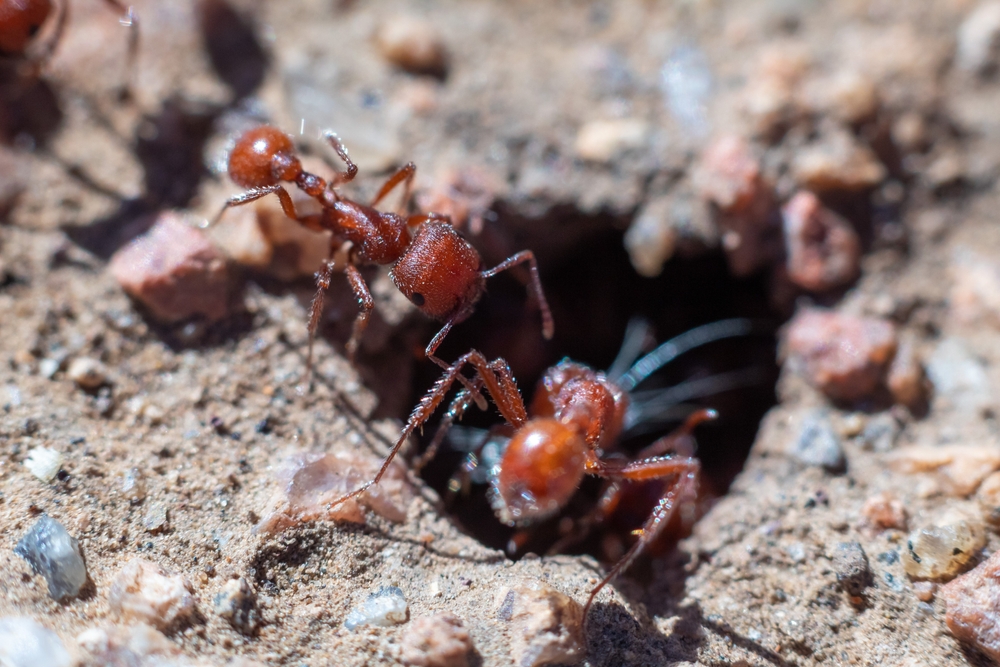Large, bald spots around your lawn could be an indication that you have harvester ants. When nesting, harvester ants are known to clear all greenery from around their preferred nesting site to make room for their breeding activity, which may cause you to believe that your lawn is sick. However, before you call a lawn care specialist, review the following information regarding harvester ants to see if they could quite possibly be the problem.
What Are Harvester Ants?

Harvester ants are an unusually, large and burly species of ants that get their name from the way they harvest and forage for seeds, which is their main food source.
There are over 20 species of harvester ants throughout the U.S, with California harvester ants, Western harvester ants, red harvester ants, and black harvester ants being the most common, which are all mainly found in the southwestern part of the United States, and Florida harvester ants, which are mainly found in the eastern parts of the United States.
Harvester ants have a brownish-black or orangish-red exterior with a 1/4 to 1/2-inch long, segmented body that includes two spines on the top. The undersides of their heads also contain long hair, which makes them appear as though they have a beard. Like all other ants, they also have six legs and an antenna.
This species of ants thrive in hot, dry conditions and usually construct their nest in flat, open lawns with sandy soil, such as yards and gardens, where there is ample space to build their mounds.
Harvester ants generally prefer the outdoors to indoor environments; however, they will sometimes unintentionally make their way inside through small openings around doors and windows, where they can become a nuisance.
harvestor ants
Are Harvester Ants Dangerous?
Like fire ants, harvester ants are also known to bite and sting. However, harvester ants, excluding red harvester ants, are typically less aggressive than fire ants. The painful sting of carpenter ants also tends to have a longer-lasting effect than other ants, and the venom can cause severe allergic reactions in some individuals. The level of venom delivered in each bite also varies by species.
Treating Harvester Ants
Outdoors, the most obvious sign you have harvester ants are bald spots in your greenery, such as the garden or lawn, accompanied by large mounds of up to 53 inches wide. You may also notice increased ant activity around the backyard or other recreational areas.
If left untreated, harvester ants may eventually make their way inside your property, so be sure to seal all gaps and openings around all the windows and doors to help keep them at bay. Unfortunately, once the ants make their way inside, it will take more than just a one-time treatment to rid them. In fact, it will require a series of treatments, which includes ongoing assessments and adjustments, until the issue is resolved.
Meanwhile, outside, the pest control technician is trained to safely avoid the painful bites and stings that can occur from the mishandling of harvester ants, which can be especially detrimental to kids as well as those with severe allergies. Instead, the technician will successfully treat the harvester ants, including their nests, during the time of day when the ants are more likely to be inactive, as well as implement various other techniques as needed.

